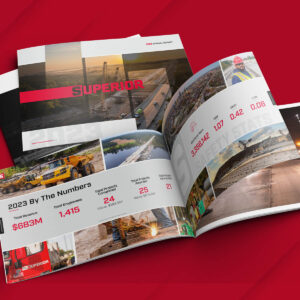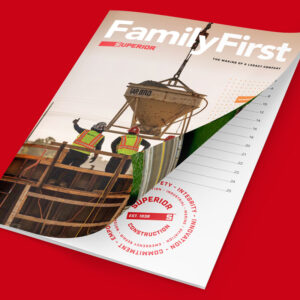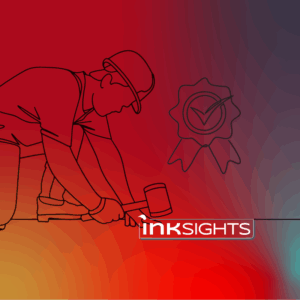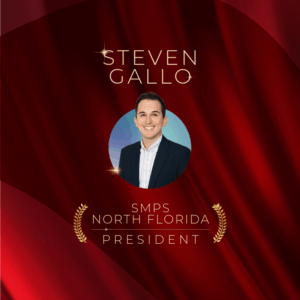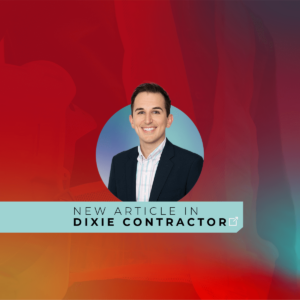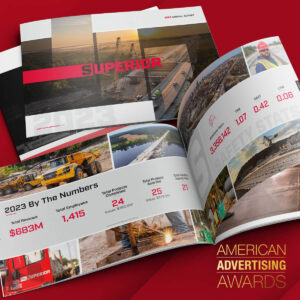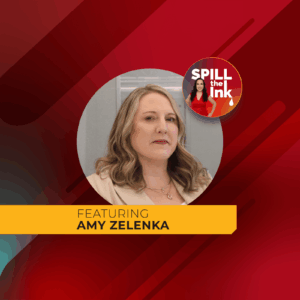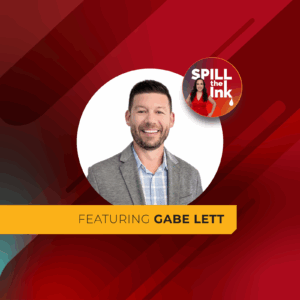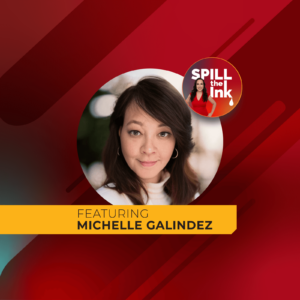
Spill the Ink: The Reputation Ink Podcast
Architecture Marketer Spotlight: Building Client Experience Into a Firm’s Brand
Jennifer Sebranek helped shape GBBN Architects’s marketing into a vibrant, creative and attention-grabbing masterpiece — much like the buildings the firm’s architects design. Their success truly cemented as the firm focused on building a client-first brand, which Jennifer refers to as GBBN’s “You, not us” approach. It captures GBBN’s unwavering commitment to prioritize the client experience and foster lasting connections with the built environment, clients, project partners and each other.
Michelle Calcote King invites Jennifer to share insights into GBBN’s marketing approach and the trends shaping its future. In this episode of “Spill the Ink,” they underscore the significance of an authentic brand identity and personable writing. Michelle and Jennifer also explore how GBBN integrates video, public relations and email marketing into its overall strategy.
Here’s a glimpse of what you’ll learn
- Who is Jennifer Sebranek and what is GBBN Architects
- GBBN’s “You, not us” approach
- How GBBN’s brand has transformed over the years
- How GBBN uses social media to give audiences a “peek behind the curtain”
- The role of video in architecture marketing
- The benefits of public relations for an architecture firm
- How GBBN leverages email marketing to stay top of mind with prospective and current clients
- Why architecture marketers should invest in elevating the client experience
- How to get the most out of professional associations like the Society for Marketing Professional Services (SMPS)
About our featured guest
Jennifer oversees GBBN’s award-winning marketing department and directs communications and public relations initiatives across all markets and offices. She’s a flexible and patient consensus-builder who works with her team, firm leadership and a growing workforce in the United States and China to ensure that GBBN’s diverse, creative voices share an authentic and cohesive brand message. Her ability to listen, empathize and consider multiple points of view is informed by all the places she’s called home—from her rural roots in North Carolina to time spent living in Chicago, England and Cincinnati.
Jennifer is a past president of the Greater Cincinnati chapter of the Society for Marketing Professional Services, where she has also been recognized as “Marketer of the Year.” She was named a 2023 Cincinnati Business Courier’s “Women Who Mean Business,” and she is frequently invited to present her marketing insights at conferences, including the SMPS Pinnacle Experience and the Cincinnati Public Relations Society of America Media Day Conference.
Resources mentioned in this episode
- Check out GBBN Architects
- Follow GBBN on Facebook, LinkedIn and Instagram
- Connect with Jennifer Sebranek on LinkedIn
- Say hello to Michelle Calcote King on Twitter and LinkedIn
- Check out The Reel GBBN
Sponsor for this episode
This episode is brought to you by Reputation Ink.
Founded by Michelle Calcote King, Reputation Ink is a public relations and content marketing agency that serves professional services firms of all shapes and sizes across the United States, including corporate law firms and architecture, engineering and construction (AEC) firms.
Reputation Ink understands how sophisticated corporate buyers find and select professional services firms. For more than a decade, they have helped firms grow through thought leadership-fueled strategies, including public relations, content marketing, video marketing, social media, podcasting, marketing strategy services and more.
To learn more, visit www.rep-ink.com or email them at [email protected] today.
Transcript
[00:00:00] Jennifer Sebranek: We have had a time period where firms were so busy, backlog was at the highest it’s ever been, we also had the COVID pandemic where people weren’t able to meet face-to-face. So you’ve got busyness and you don’t have that one-on-one time. And I think in that time period, it was really hard to connect with your clients and to build these relationships that help get you that next project or help them become advocates for your brand. So for us, we are really focused on going back to the basics of the client experience.
[00:00:33]: Welcome to “Spill the Ink,” a podcast by Reputation Ink where we feature experts in growth and brand visibility for law firms and architecture, engineering and construction firms. Now, let’s get started with the show.
[00:00:51] Michelle Calcote King: Hi, everyone. I’m Michelle Calcote King. I’m your host, and I’m also the principal and president of Reputation Ink. We’re a public relations and marketing agency for architecture, engineering and construction firms and other professional services firms. To learn more, go to www.rep-ink.com.
Is there such a thing as a right way to market an architecture firm? Which strategies work? Which don’t? What’s up and coming for the industry that we should all be talking about? That’s what we’ll talk about today as we continue our series of interviews with leading architecture firm marketers.
So I’d like to welcome Jennifer Sebranek to the podcast. She’s the principal and chief marketing officer at GBBN Architects. So excited to have you here today, Jennifer.
[00:01:33] Jennifer Sebranek: I am so excited to be here as well.
[00:01:35] Michelle Calcote King: Awesome. And I hope I nailed your name right?
[00:01:38] Jennifer Sebranek: Perfect. It was perfect. Yes. Yes. Yes.
[00:01:40] Michelle Calcote King: Well, let’s start off, just tell me a little bit about your career and you know, sort of how you ended up in this field and at GBBN.
[00:01:47] Jennifer Sebranek: Sure. I have been in the AEC industry for 15 years now. It’s amazing how quickly that ticks up on you. And I ended up here after relocating to Cincinnati. And I didn’t really know about this as a specialty in marketing. I had a marketing background, had been in the furniture industry, but I found myself working for a developer. And then after a couple of years there, jumped over to the architecture side.
And why I love architecture is because at the end of the day, you get to see a physical manifestation of the work that you did. It comes out in a building or a space or revitalization. Whatever it is, you get to see it, you get to touch it, and it really represents all the work that not only the architects and the construction companies did and engineers, but it also represents all the work that the marketing teams and the business development professionals did to make that happen.
I’ve been at GBBN for ten years now, and we have really been focused on sharing our story about how we are positively affecting our clients. How are the things that we do as architects making our clients more successful, helping them hit their goals? And we’re focused in higher education, community development, healthcare, as well as the arts, and we have a technology team.
[00:03:08] Michelle Calcote King: That’s great. I’ve got some specific questions, but if someone were to say, you know, “Tell me, what’s your approach to marketing and business development for GBBN?” Could you sum that up for us?
[00:03:19] Jennifer Sebranek: Yes. I like to talk about us being focused on, “You, not us.” So our marketing and business development approaches are always centered around our clients, our potential clients, our partners, and how we’re helping them surface their issues and find solutions through space.
At our firm, we do have two separate marketing and business development approaches.
Marketing is all about awareness, making sure that everybody is able to learn about us and think about would we be a good partner for them. And then, of course, business development is all about relationships, right? How are we cultivating those relationships?
Both are really centered on the voice of our clients. What are they up against? How can we help them? How can we make them look good to their bosses? What’s really working for us is really focusing on them and their issues versus us as architects and what we’re doing.
[00:04:16] Michelle Calcote King: I got to tell you, I love your brand and also just sort of your brand voice. You’re kind of like a little bit edgy. It’s different. Can you tell me a little bit about the brand and the brand voice and sort of how you developed that? Was it hard to kind of be able to push the needle a little bit with that?
[00:04:33] Jennifer Sebranek: Yeah, so our brand is five years old this year. And it was about a journey of about eight years to deploy that new brand. We are very fortunate at GBBN that our leadership, we believe in the value of marketing and business development.
[00:04:48] Michelle Calcote King: I could tell, yeah. You can really tell that. Yeah, absolutely.
[00:04:52] Jennifer Sebranek: And it’s very rare sometimes to have your CEO that absolutely — and our CEO, Matthew Schottelkotte — he understands that, “Hey, we’re architects and we do that well, but we need people to really help us tell our story because we like to geek out on butt glazing and facade system, and our clients probably don’t want to geek out about that.” So we said, “How can our brand really reflects who we are and what we do for our clients?”
So we started first with really making sure that we were aligned as a leadership about who is GBBN, what do we stand for. So, we rewrote our guiding principles. We rewrote our mission statement. We really aligned on that. And then, the next step that we did was we created what is called a brand plan, and that is really starting to surface how are we different? What are the adjectives that describe our firm? How do we like to communicate with our clients? We went through that activity, and then we turned it over to an external agent feed to help us really bring those words to life. That didn’t only mean just the visual, the logo, the brand look, but also what are the words that we’re using so that we’re making sure at the end of the day, we’re connecting with the clients and what they care about.
So the brand has been really fun. So, five years and we’ve really tried to make sure that we evolve it to stay current with what we’re learning about our clients, learning about what’s working and not working. We have the most incredible marketing team here. When we rebranded, we made the strategic decision to hire a writer to help us surface those issues. It has been so successful that we hired another writer. We also have two graphic designers, a marketing manager, a marketing coordinator, and then myself. And the team really works together day in and day out to do proposals, but also to think about what is our social media campaign, how are we doing video? What are we doing to really connect to today’s client and tomorrow’s clients?
[00:06:47] Michelle Calcote King: Love that. Yeah, you can really tell. We work across professional services firms and our other market that we work a lot with this law firms. So architecture firms tend to push the needle in creativity, but I felt like yours really stood out. And as I was kind of reading through your social media, you often find this very stuffy, overly formal, corporatey language, and you don’t have that. You have a very personable, “We’re people here,” kind of talking, kind of feel to it. Was that on purpose?
[00:07:17] Jennifer Sebranek: That’s very intentional. It’s very intentional.
We like to describe our social media as, “A glimpse into the firm.” Our two major audiences are potential talent as well as clients that are using social media. And we wanted to make sure that it felt like a peek behind the door. What does it feel like to work at GBBN? And also what does it feel like to work with GBBN?
I think sometimes in our industry, we get so focused on that beautiful architectural final photo and if it’s got a trash can in it and everybody gets really upset. What we wanted to do with our brand is to really peel back and show the thinking behind the making. How are we using digital fabrication to work with contractors to be able to get that perfect angle in that building that looks amazing in the final photo, but is messy behind the scenes? So that is always the goal is to really make it just a little bit of a behind the curtain of what’s happening today.
[00:08:12] Michelle Calcote King: The other thing I noticed is you’ve got some really cool content. You know, I saw “The Reel GBBN.” Tell me about the strategy behind producing that.
[00:08:20] Jennifer Sebranek: So we’re always looking at how our users are consuming content. And I think as all marketers know is that what works today doesn’t work tomorrow. So we have been over the last few years really thinking about video and how do we integrate it more? And I think in our industry, I mean, marketers, man. We wear so many hats and then you just throw in this request for proposals on top of it and we’re busy all the time.
So we had to figure out a way to do videos, A, with no budget, because again, marketing AEC. And two, with a thousand other things on our plate. So what we did is we set a goal for every year we do about two to three project stories, and we realized that we’re also doing still photography and everybody that’s been on a photo shoot knows that there is so much time where you’re just standing around waiting for people to fluff pillows, waiting for people to move. So what we did was we said, “Okay, while we’re on site, let’s just get our Samsung video camera, cell phone, and let’s record. It’s a low buy in, we bought a really basic microphone, and then our graphic designer interviews our project team to get the story behind it. And then we edit it all in house, and then it all comes together as a story about our project that helps supplement our case studies and other materials to tell the story. That was so successful that then we said, “What other stories can we tell? Let’s interview our employees and find out why they like working here. If we do something fun, let’s do a video on that to really help people see what it’s like to work here.”
[00:09:57] Michelle Calcote King: That’s great. There’s a time and place for that beautifully scripted, high-end video, but then just getting out there with your iPhone or something like that, you can really, really produce great content. I think people like that kind of less scripted and produced content many times. There’s different means for it.
[00:10:17] Jennifer Sebranek: Yeah, it’s, it’s, especially with the trends of the TikTok, which we have not ventured into yet. When I see our partners that do video for us and they put these beautiful stories together and I feel like for like a professional firm, you need both. You need those that can tell the story in this beautiful produced way, and then you need this kind of gritty, kind of you figure out a way to do it internally. So it’s a good combo to have.
[00:10:39] Michelle Calcote King: The other thing I noticed is that you are regularly published in a lot of publications, a lot of trade publications. What’s the benefit you’ve found behind the PR that you’re getting and how do you approach PR?
[00:10:51] Jennifer Sebranek: One of the major reasons for our rebrand was that we were ready to signal to the world about the elevated design that we’ve been doing over the years.
We’re a 58-year-old firm. We’ve been around, people knew us as a good technical architect. But over the past years, we had really been investing in staff that had worked in New York and San Fran and Chicago who are coming to our cities. And we had also been developing our staff to that next level of design. So we had all this amazing work that was winning awards, but we hadn’t really been sharing that. So that was a big point of the rebrand was to be able to share that story.
We are organized into market sectors. For example, our healthcare team. What I did is I sat down with each of the leaders of those market sectors, and I said, “What is your marketing plan?” And we developed a speaking, a writing, a publishing, a present strategy for each of those and we realized that, “Hey, we really needed this third-party publishing to help credential us and to help validate.” It’s so much easier to go to the client and say, “Well, we’ve been published in the New York Times, we’ve been published in Healthcare Design and in Behavioral Health, because they instantly like, they’re like, “Okay, that’s credible.” And I think we started to see like with that, it just started to raise our awareness. And then there’s nothing better than having someone else share your content on social media cause it gets to their audiences. So that success just really started to build, and that’s the reason we needed that second writer, we needed that second graphic designer to keep up with the demand that was out there.
[00:12:24] Michelle Calcote King: Love that. Yeah. And that’s exactly it. It’s the credentialing, the validation, and third-party sharing your story. And yeah, like you said, on social media, it just sort of amplifies it because those outlets know what they’re doing and are building audiences that you want to be in front of.
Let’s talk trends. So we talked about what are you guys doing, but where do you see things headed? What, what are you kind of keeping an eye on right now in terms of what’s the next thing for you guys marketing your firm?
[00:12:52] Jennifer Sebranek: I mean, we’re absolutely keeping an eye on technology and what’s happening with websites. We have an office in China. We use WeChat a lot to communicate. So we’re trying to make sure we know that nothing stays the same and once you have success somewhere then it’s time to pivot.
But I have to say, in our industry, one of the most important things that I think that we have to focus on is the client experience. So, lo-fi, but I think what happened in our industry is we have had a time period where firms were so busy, backlog was at the highest it’s ever been, we also had the COVID pandemic where people weren’t able to meet face-to-face. So you’ve got busyness and you don’t have that one-on-one time. And I think in that time period, it was really hard to connect with your clients and to build these relationships that help get you that next project or help them become advocates for your brand. So for us, we are really focused on going back to the basics of the client experience and making sure that we’re reminding ourselves what it was like to connect with each other before we all went remote. We’re making sure that we’re really thinking about, “How do we make a special experience so we can help our clients differentiate between us and another architecture firm?”
Oftentimes architecture firms, we all speak the same language. We’ve had interviews where clients have been like, “You all say the same words, but how are you different?” And I think how you’re different is how you show, and how you work with somebody. How you build that relationship. I mean, we all have vendors that call us and ask us for things and we don’t like that because they’re asking us to do something for them. But those people that you love to pick up the phone and work with are ones that are calling you to really help you. To really say, “I know you’re thinking about this in your business and here’s how I can help you or here’s how we can work together to accomplish your goals and make you look good to your boss.”
So that’s really what we’re going to be focused on is really making sure our project managers, people working with clients day-to-day are focused on cultivating that amazing experience to help us be different in the competition.
[00:15:01] Michelle Calcote King: I’ve seen a lot of people talking about how, you know, obviously, AI is the big topic right now, but one of the interesting points somebody made was that the more that AI becomes prevalent, I think the more people will revert back to wanting to deal with humans and want that human touch and want that real relationship. I can 100-percent understand that because you start to not trust a lot of what you see. We went through this whole digitization phase with the pandemic and I think we’re going to get back to a little bit more of “Okay, you know…” And you’ve got to be there. You’ve got to have that digital side of it, but that more human element is going to, I think, going to be the thing that a lot of firms are focused on.
[00:15:38] Jennifer Sebranek: You’re so right. You’ve got to have both. You’ve got to have both to stay relevant. You have to have the digital to be relevant and then you’ve got to have human touch to stay connected.
[00:15:47] Michelle Calcote King: Yeah. And I think people will crave it the more tech takes over a lot of our lives.
I noticed that you’re a former Greater Cincinnati SMPS president — and SMPS for any of our listeners, it’s the Society for Marketing Professional Services. It’s the main association for marketers at architecture, engineering and construction firms. You’re a member of the Board of Directors. Can you talk me through how has SMPS helped shaped your career? And, you know, if younger AEC marketers are listening, would you encourage them to get involved? What are some other avenues that have helped you develop in your career?
[00:16:21] Jennifer Sebranek: Oh my goodness. Absolutely get involved with it. There are very few people that understand what it’s like to have five proposals on your desk, have three e-blasts that have to go out tomorrow, and a thousand other things on your plate. Marketers and business development professionals in our industry, we are a special group of people. SMPS is not only a crucial resource for me to learn about the trends that are happening, also to connect with people across the country, but it’s also a way to have a group that really understands what you’re going up against every day in your life and not only commiserate, but to help you have strategies.
One of my closest friends works for a competing architecture firms and we’re not sharing competitive intelligence, but we are working together to figure out how we all navigate through these crazy environments that we work in. It’s deadline-driven, it’s high-pressure, it’s different, and I think that having that network out there, it has just been so beneficial for not only my mental health, but to actually help me get to the C-Suite in this firm. Knowledge is power and being able to take to my CEO and the other members of our strategic team, trends that we’re seeing, being able to say, you know, “My SMPS friends in other cities are seeing this and I think it’s coming to our city next.” It really starts to validate your information. And the best way to get involved is to be on a committee in your local chapter and then to make sure you go to the conferences because that’s just where you get other opportunities to connect.
[00:17:52] Michelle Calcote King: I agree. I’m pretty involved in the Southeast. Even as an outside consultant, one, it just helps me understand what my clients are going through, you know. Gives me that kind of intelligence.
And I hate to back up to tactics, but you mentioned email and I’d love to know your approach to email. What are you putting out over email? Is it a priority? What are some of the ways that you’re using email within your overall strategy?
[00:18:15] Jennifer Sebranek: Each of our markets, part of their marketing plan is e-blast. We made the move about three years ago to go away from the monthly newsletter. We were not seeing open stats, engagement stats that really showed. And then we realized, “Hey, if our brand is about ‘Focus on them, not us,’ we’re just sharing information about us.” So we pivoted from that, put our resources into thought leadership and doing e-blast. So each market then segmented their audiences and to specific ones. So we have our developer and then we have our healthcare and our higher education because we didn’t want to be noise. We don’t want to communicate noise to other people that aren’t interested.
So we do use it to ship out insights, market-specific, and we try to only do it quarterly. Just not to be noise. But each market, they each have touch plans, so if they have a quarterly newsletter, then there might be other business development touches that they’re following up via email for a client saying, “Hey, I know you’re really struggling with making your sustainability goals by 2030. Here’s an example of what our other clients are doing.” Just trying to have touches in between those to make sure we’re staying on their minds and being relevant to what they’re up against.
[00:19:31] Michelle Calcote King: I appreciate you kind of diving into those different tactics because I’m always interested to see how people are using different tools. Some marketers favor some versus others, but yeah, segmentation and making sure that you’re not annoying your, you know. They don’t see your email in their inbox and think, “Irrelevant,” you know.
[00:19:48] Jennifer Sebranek: MailChimp makes that so easy. I mean, there are others too, but it’s just, it’s so easy just to keep it all separate and update.
[00:19:55] Michelle Calcote King: I like to kind of end our interview with a final lesson. Is there a lesson you would say is one of the most valuable lessons you’ve learned over the course of your career in architecture marketing that you think other marketers would benefit from hearing?
[00:20:10] Jennifer Sebranek: I think at the end of the day, everybody wants to help everybody. And I think a lot of times we can be embarrassed or a little hesitant to reach out to someone and say like, “Hey, I see you’re doing this and it looks great. Can you help me?” I feel like in our industry, marketers are so wanting to help each other. So I totally recommend build your network, be bold and ask people, “How are they doing that? Can they give you some advice?” Because I think a lot of times people think, “Well, they’re not going to share their process.” But I can tell you my process, but the end of the day, you’re going to interpret it in your own unique way. We’re not making widgets. We’re creating experiences and that means that we’re all gonna be doing it differently and you can’t copy me because you’re not me. So, be open to sharing information, be open to connecting and taking the time to meet others that you really look up to and they will always be willing to share some advice or help you be successful ’cause in this industry, it is the most collaborative sharing group I’ve ever worked with and it’s just phenomenal.
[00:21:15] Michelle Calcote King: It’s fantastic advice. Took me a while to learn, but, once I did it’s a game changer.
So we’ve been talking to Jennifer Sebranek of GBBN Architects. If people want to get in touch and form a relationship with you, what’s the best way for them to get in touch?
[00:21:28] Jennifer Sebranek: Oh, you know, I’ve got to pitch our Instagram or LinkedIn feed for you to be able to get that peek behind the scenes of what it’s like to work with and at GBBN.
We’re at @GBBNArchitects and feel free to direct message me through any of those platforms. I get copied on all of those inboxes, so I’m happy to reach out and connect and talk more about the awesome things in this industry.
[00:21:50] Michelle Calcote King: Awesome. Well, thank you so much.
[00:21:54]: Thanks for listening to “Spill the Ink,” a podcast by Reputation Ink. We’ll see you again next time and be sure to click “Subscribe” to get future episodes.
Related AEC and Architecture. Content
Maximizing Employee Engagement Through a Compelling Employee Newsletter
Reputation Ink | Jun. 24, 2025
Rebuilding a Construction Company’s Brand With Impactful Visuals
Reputation Ink | Jun. 24, 2025
Join the INKsights Email List
Get Exclusive Updates on Awards, Lists, Rankings, Editorial Opps and More.
Subscribe to our newsletter, INKsights, to receive insights (pun intended) on thought leadership, public relations, and marketing for B2B professional services firms sent straight to your inbox.
Available only to our email subscribers:
Once a month, you’ll receive the latest awards, rankings, lists and editorial opportunities in the legal or AEC industry (you choose which you’d like to receive).
In the off weeks, we send you our latest thinking on the marketing and PR issues facing those industries. You can opt out anytime (although we’ll bet our favorite coffee mug you’ll never want to leave).

